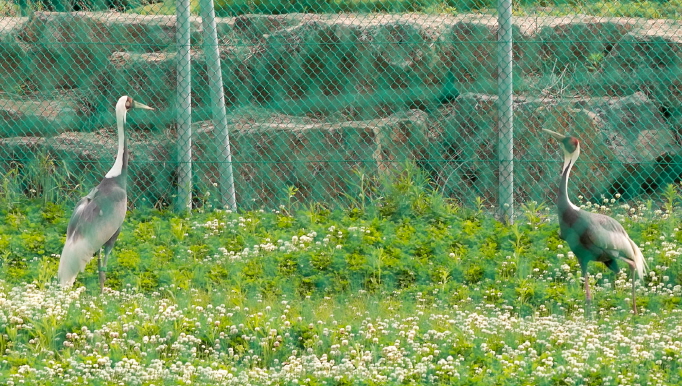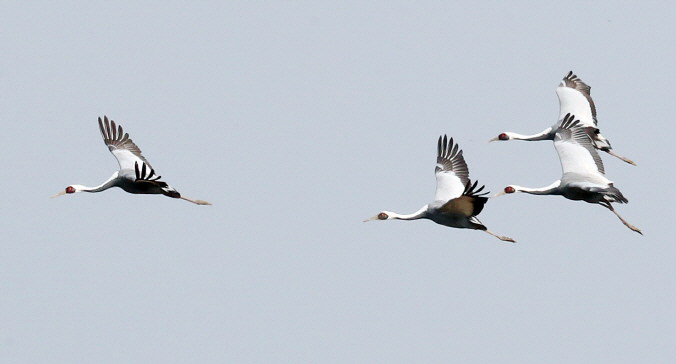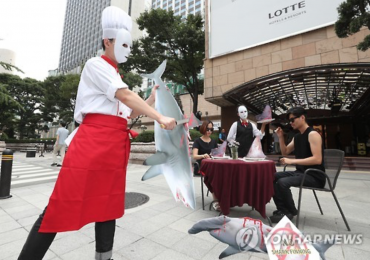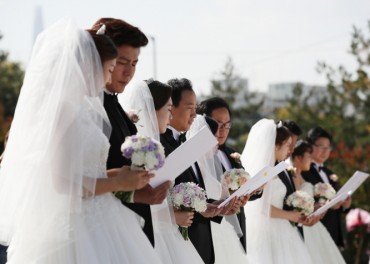
Cheorwon County named the male and female cranes ‘Cheorwoni’ and ‘Sarangi’, before making an attempt to send them back into the wild in March. (image: Cheorwon County Office)
CHEORWON, May 28 (Korea Bizwire) — A white-naped crane couple, members of a species registered as natural monument No. 203 and classified as a endangered species, is gaining the country’s attention as the birds decided to stay in the central border town of Cheorwon throughout the whole winter and remain there to this day.
The cranes normally fly 2,000 kilometers from Siberia to the Cheorwon Plains in October to escape the frigid winter temperatures, and return to Siberia in March.
It is an unusual occasion for the cranes to stay in Cheorwon this late in the year, but there is a story untold about the crane couple.
In 2005, a female crane was rescued after breaking one of her wings. In 2018, a male crane was rescued after suffering from frostbite to its legs.
The female had to undergo surgery after a medical team determined that the bird’s right wing was broken in three locations.
The wing never fully recovered due to complications in the muscles and the ligaments, and she hasn’t been able to fly ever since.
The two cranes were transferred to a crane protection center in Cheorwon’s DMZ Peace Town for Migratory Birds where they became a couple last winter.
The female laid two eggs, on April 11 and 13. The couple took turns incubating the eggs, but after 40 days they still had not hatched.
Normally, white-naped cranes sit on eggs for 30 to 35 days. If the eggs pass 40 days without hatching, they are usually considered not to be viable.
Cheorwon County named the male and female cranes ‘Cheorwoni’ and ‘Sarangi’, before making an attempt to send them back into the wild in March.
Sarangi, the female crane, however, couldn’t fly, and Cheorwoni, her male partner, decided to stay with her and settle in at the protection center.
White-naped cranes, unlike other birds, are known to spend their entire life protecting their partners.
H. M. Kang (hmkang@koreabizwire.com)







